Properly and accurately clean the jacket at home

The most versatile item in a wardrobe for both men and women is a jacket. This type of clothing is combined not only with classic trousers and strict skirts, but also with many other things, so they wear it almost daily. In order to always look perfect, you have to keep it clean. When dirt appears, you can take it to dry cleaning, or you can do it on your own, most importantly, determine the type of pollution and their location.

What are the types of pollution?
There are different types of dirt that are located in various places on the jacket. They can be dry-cleaned, wet-cleaned, or laundered without the need for a professional dry cleaner.
The simplest contaminants that are easiest to deal with are dust, small specks and hair located all over the surface of the jacket. Spots of various origins are localized in the area of the sleeves and shelves. But often the most unsightly places are the shiny collar, sleeves and pockets, so they are the most difficult to deal with.
Regardless of the type of fabric, there are general cleaning rules that must be followed in order to avoid the consequences of an incorrectly chosen method and procedure.

First of all, you need to carefully inspect the jacket for stains. On dark clothes, a white spot from the corrector can be seen with the naked eye. Putty, ink and other stains can be removed by choosing the appropriate cleaning method, but first checking the effect of the product on the most inconspicuous area of \u200b\u200bthe fabric.
A greasy collar, greasy sleeves at the cuffs and elbows, all kinds of scuffs are cleaned only after the stains are removed, and only then the jacket is rid of the smell of sweat localized in the armpits, using the appropriate cleaning method. The final step is to clean the rest of the jacket. In order to remove small debris and hair from the surface of the fabric, use special brush, the choice of which depends on the type of material.

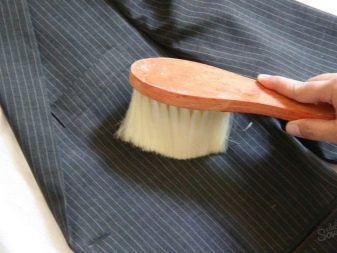
What to wash?
There are several folk ways with which you can tidy up any jacket. Depending on the type of stain, different cleaning methods are used.
The corrector is removed from the surface with alcohol or a solvent. Dishwashing liquid is great for removing oil stains. Fruit juice stains can be removed with shampoo and water. Small spots of coffee or tea origin are rubbed off with ammonia.
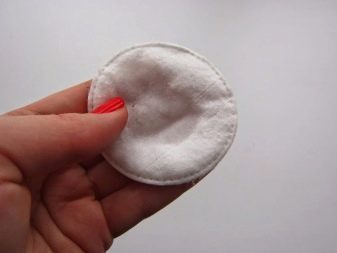
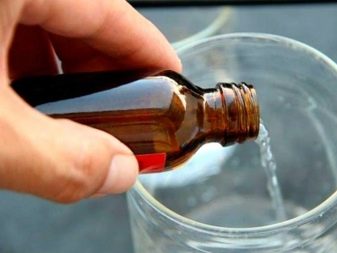
After removing all types of stains, you can proceed to the most problematic places: the collar, lapels, pockets and sleeves. To clean these areas, you can use several methods that use a variety of combinations of simple and, most importantly, affordable products.
Has an excellent cleansing effect a solution of ammonia and salt. To prepare it, you will need a container in which you need to mix 1 tsp. salt and 6 tbsp. l. ammonia. With this mixture, you need to process the collar area.
Ammonia can also be used in combination with water. To prepare a cleaning solution, mix 3 parts water and 1 part ammonia. Wipe the area on the collar with the resulting solution until the dirt disappears completely. After that, it is necessary to wet a small piece of cloth in water and carefully rinse off the remnants of the solution, and hang the jacket to air and dry.
You can remove dirt from the collar with the help of cooked soap solution. To do this, plan laundry soap into small chips or use a liquid soap substance in the amount of 3 tbsp. l, which is dissolved in half a liter of water. The resulting solution treats the surface of the collar without excessive wetting.
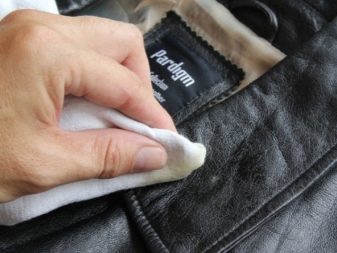
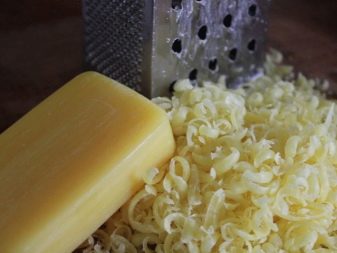
Alternatively, you can use regular vodka, in which a piece of cloth or a cotton pad is wetted. After this treatment, you need to take a small piece of wet gauze and, putting it under the front of the collar, iron it from the wrong side until the gauze dries completely.
A good way is to treat greasy areas with raw potato tuber. To do this, you need to cut the pre-washed potato into 2 parts and rub the greasy collar with the resulting cut. After this treatment, be sure to wipe off the traces of potatoes with a clean rag.
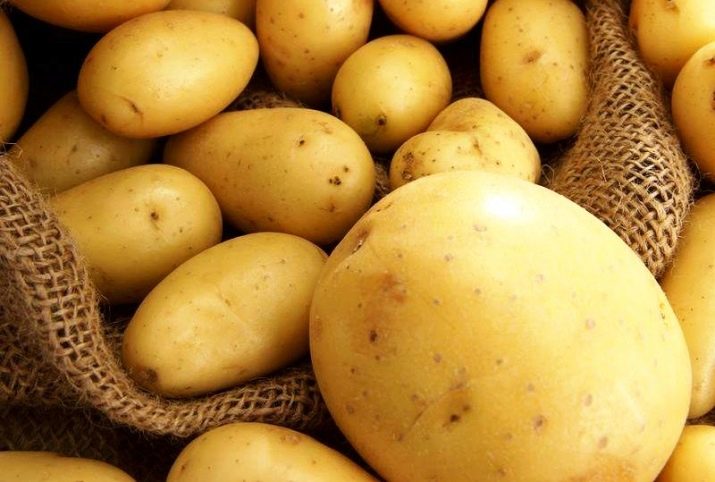
To tidy up the area of the elbows and cuffs, you can use not only the above methods, but also use other means.
A good effect has a solution prepared 1 part vinegar and 1 part water. But you can use one vinegar. To do this, you need to heat it in a water bath to 30-40 C.
An excellent cleansing effect has a solution prepared from water, ammonia and 96% medical alcohol. We add water in the amount of 200 ml, 1 tsp of ammonia and 1 tsp of alcohol to the container, mix the solution and carry out the processing.
To get rid of the unpleasant smell of sweat in the armpit area, you can use several methods, for example, apply a solution of vodka and ammonia in a 1: 1 ratio to the problem area. Ammonia can be mixed with water and alcohol. For 4 parts of water for the solution, you need to take 1 part of alcohol and ammonia. Salt can be used instead of alcohol. Here the proportion is somewhat different 1:1:1.

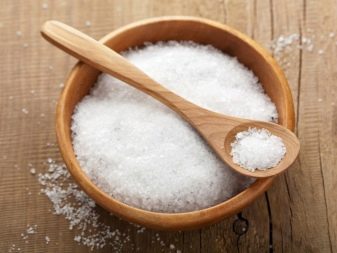
After removing stains and treating problem areas, you can proceed to general cleaning. On a flat surface, a light fabric spreads, on which the jacket is laid. With a suitable brush or roller, we clean the surface of the product from various particles, shake it and spread it again on the prepared surface. We prepare a soapy solution and, using a brush dipped in it, carefully process the entire surface of the jacket. After that, you need to walk on the surface with a sponge dipped in clean water, and dry the heavily wet parts with a towel. Hang the jacket to dry in a well-ventilated place.
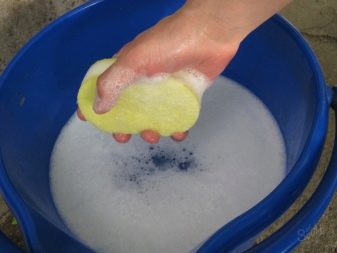
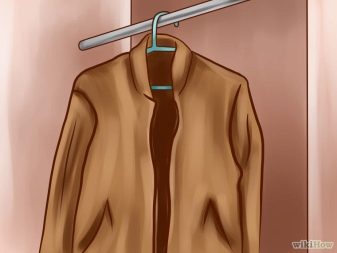
In the washing machine
Machine wash is the easiest and fastest way to clean up your jacket at home. Machine wash, as a rule, is used for products without adhesive backings.
Before washing, it is necessary to carefully inspect the product for the presence of things in the pockets and, if possible, treat hard-to-clean stains and underarms of the jacket with the above methods. And only after that load the jacket into the wash.
As a rule, for these products is selected delicate wash cycle. The water temperature should not exceed 30-40 C. Do not use washing powder, it is better to opt for a liquid product designed for this type of fabric. The number of revolutions for spinning should be kept to a minimum, and for some products it is better to disable this function altogether.
After washing, the damp jacket is smoothed out with a warm iron and hung out to dry on a coat hanger in a well-ventilated area.


Different types of fabric
Jackets are made from different types of fabric, so before washing in the machine, you must study the tag, which indicates the composition and recommendations for care. It is worth considering that Not every jacket can be machine washed. There are products that absolutely cannot be subjected to any washing.
As a rule, there is a special tag on the lining, on which the manufacturer indicates the conditions for care. If a circle is drawn on the label, inside of which there is a square, then you will have to do without washing and clean the jacket in another way.
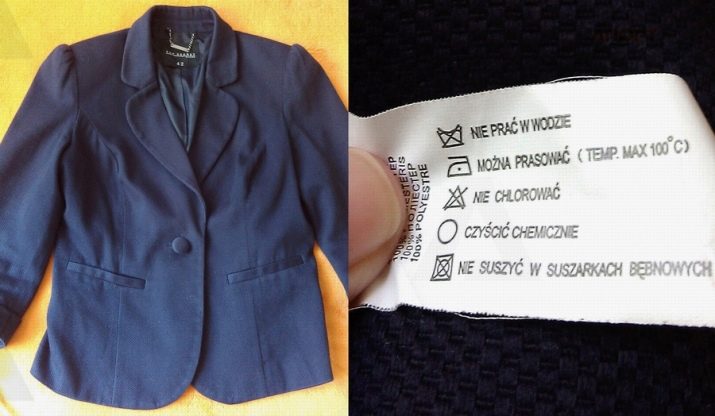
These products include a suede jacket. Any type of washing is unacceptable for him, since this material can significantly decrease in size, in addition, it does not tolerate spinning. For a suede jacket, the best option is to clean with a special brush with steam pre-treatment.
A woolen jacket can be washed, but only by hand and at water temperature. not higher than 30 C.
Corduroy and velor jackets are made from a fabric that includes both cotton and synthetic fibers, which give special strength to these materials. They can be machine washed if the information on the tag allows cleaning in this way. But it is better to exclude the spin function.

We take into account the color
When washing both men's and women's suits, it is necessary to take into account the color of the products.
If the jacket comes with trousers or a skirt, then in order to avoid the formation of uneven colors, you need to wash both things at the same time. In addition, the dark color is more prone to shedding than white, especially if the temperature regime is not observed during washing. On dark colors, when using the powder, streaks may remain, as it is poorly rinsed out of the fabric.
For the treatment of armpits before washing, light-colored products use hydrogen peroxide, which is applied to a surface moistened with water.

Manually
If machine washing is not suitable for a jacket, then, as a rule, a manual method is chosen. You can wash the jacket by hand not only in a special container, but also in the shower, hanging the product on a coat hanger. Detergent is selected according to the type of fabric, but you can also use laundry soap.


Soak
Hand washing begins with soaking. First, slightly warm water is poured into a suitable container, and then either a special liquid agent or soap shavings is added to it. Gently immerse the jacket in the prepared solution and leave the item soaked for 2-3 hours.
Products made of delicate thin fabrics can not be soaked.
After the time has elapsed, you can proceed directly to washing. This must be done carefully, trying not to damage the fabric.Do not strongly squeeze and rub the fabric, otherwise creases and scuffs may form, and the thing will lose its presentable appearance.
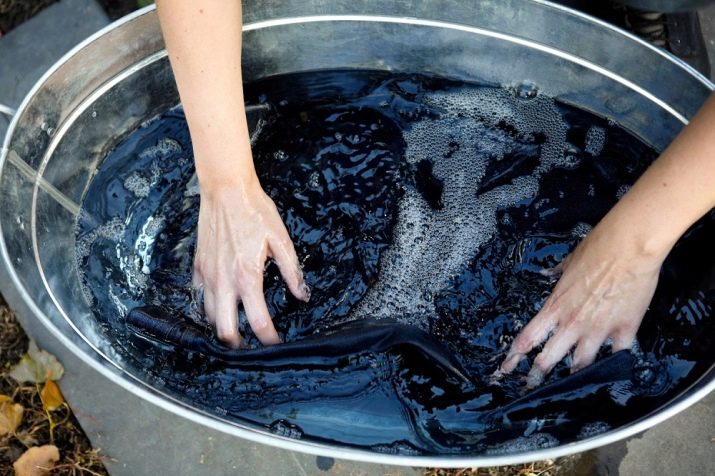
Rinsing
After washing, the jacket must be thoroughly rinsed. This can be done either under the shower, after placing the jacket on the shoulders, or in a very large amount of water. The water itself must be cool, otherwise the fabric from which the product is sewn may sit down and the jacket will lose its shape.
After thorough rinsing, you need to place the product on a coat hanger and let the water drain, after straightening the lapels and collar. It is not necessary to unscrew or wring out the jacket, as there is a high risk of deforming the product.
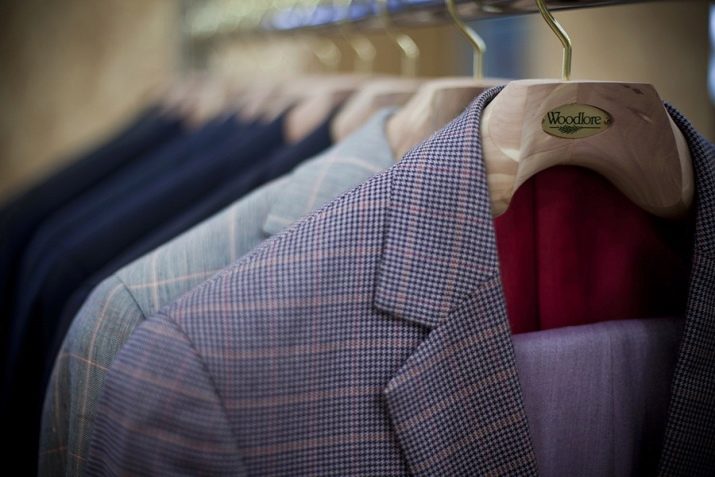
Dry cleaning
The dry cleaning method is suitable for products that cannot be cleaned with a wet method, much less washed. For cleaning, use a brush suitable for the material. Dry cleaning can be carried out both with improvised means and with the help of special kits.
To put the jacket in order, you need to put it on a coat hanger and hang it in a well-lit place. Carefully inspect the entire surface for contamination, paying special attention to problem areas, which include lapels, sleeves and collar.
Grease stains can be removed with talcum powder. It is sprinkled on the stain, and then swept away with a brush. You can also use gasoline.
The leather jacket is first wiped with a dry cloth, thus removing dust, and then the surface is rubbed with liquid soap. At the end of the cleansing, a thin layer of petroleum jelly, glycerin or castor oil is applied. After the time has elapsed, remove the excess with a soft cloth.
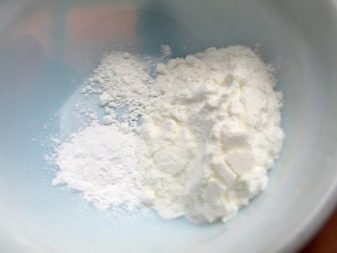
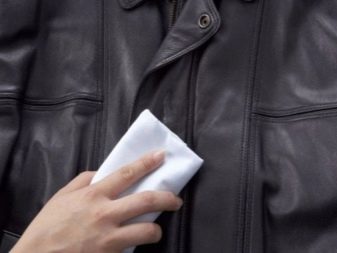
Care Tips
If you regularly take care of your jacket, following some simple rules, you can do without complicated cleaning methods.
After each wear, you need to clean the surface of the product using an appropriate brush. Stains are always easier to remove if they are fresh, so once soiled areas are found, they should be removed immediately using a suitable method. Periodically it is necessary to carry out wet cleaning using water or steam generator. Long-term storage of the product at home cannot be carried out correctly without a special cover.

For more tips on how to properly care for your suit, see the following video.




























